The Oldest Cities in the U.S. Mapped
This post may contain affiliate links. As an Amazon Associate, we earn from qualifying purchases.
The U.S. isn’t an ancient nation as far as countries go. Sure, it’s been about for a couple of hundred years nowadays. The U.S. is still pretty immature but corresponds to nations like China, Egypt, Greece, or Italy. So, where is America’s oldest city?
That question may sound direct, but many would say it is the city of St. Augustine, in Florida.
In 1513, Spanish adventurer Juan Ponce de Leon surveyed Florida. He anchored at St. Augustine, trying to find the Fountain of Youth. It is the oldest city in the continental U.S.
Declared as a Spanish land, St. Augustine was established in 1565. That’s a whole 42 years before Jamestown in Virginia. It’s 55 years before the Pilgrims anchored at Plymouth Rock.
Below is the list of the oldest cities in the United States.
Table of Contents
- 10 Oldest Cities in the U.S.
- 1. St. Augustine, Florida (1565)
- 2. Jamestown, Virginia (1607)
- 3. Santa Fe, New Mexico (1607)
- 4. Hampton, Virginia (1610)
- 5. Kecoughtan, Virginia (1610)
- 6. Newport News, Virginia (1613)
- 7. Albany, New York (1614)
- 8. Jersey City, New Jersey (1617)
- 9. Plymouth, Massachusetts (1620)
- 10. Weymouth, Massachusetts (1622)
- The Oldest City in Each U.S. State Mapped
- Alabama
- Alaska
- Arizona
- Arkansas
- California
- Colorado
- Connecticut
- Delaware
- Florida
- Georgia
- Hawaii
- Idaho
- Illinois
- Indiana
- Iowa
- Kansas
- Kentucky
- Louisiana
- Maine
- Maryland
- Massachusetts
- Michigan
- Minnesota
- Mississippi
- Missouri
- Montana
- Nebraska
- Nevada
- New Hampshire
- New Jersey
- New Mexico
- New York
- North Carolina
- North Dakota
- Ohio
- Oklahoma
- Oregon
- Pennsylvania
- Rhode Island
- South Carolina
- South Dakota
- Tennessee
- Texas
- Utah
- Vermont
- Virginia
- Washington
- West Virginia
- Wisconsin
- Wyoming
Here is the map of America’s 10 oldest cities created by ThoughtCo that reveal the captivating story of the historical events that shaped the country.
10 Oldest Cities in the U.S.

1. St. Augustine, Florida (1565)
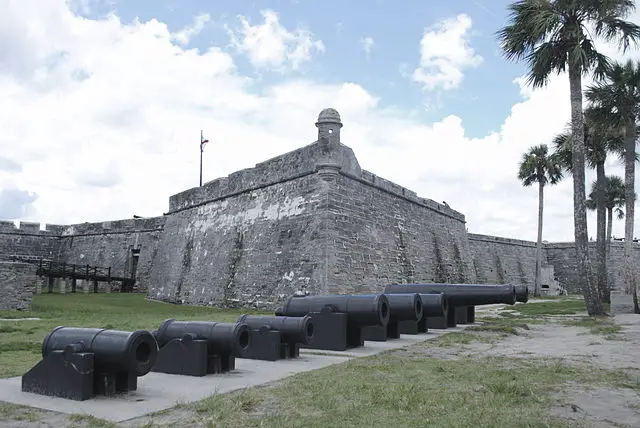
Established by the Spaniards in 1565, this city in northeastern Florida is the oldest continuously inhabited European settlement in the United States located in northeast Florida, about 40 miles (65 kilometers) southeast of Jacksonville.
The Spanish adventurer Juan Ponce de León, in quest of the mythical Fountain of Youth, anchored there in 1513 and took possession of the land for Spain. In 1564 France founded Fort Caroline near the mouth of the St. Johns River, approximately 35 miles (55 kilometers) north. A year afterward, Pedro Menéndez de Avilés destroyed the French colony and founded the town he named for St. Augustine to hold Spanish independence over Florida.
Since 1821 the town has been a part of the U.S. A remaining symbol of one-time Spanish power is the massive Castillo de San Marcos, built-in 1672–95 near the peninsula’s southern tip; the oldest masonry fort standing in the U.S. is now a national monument.
2. Jamestown, Virginia (1607)
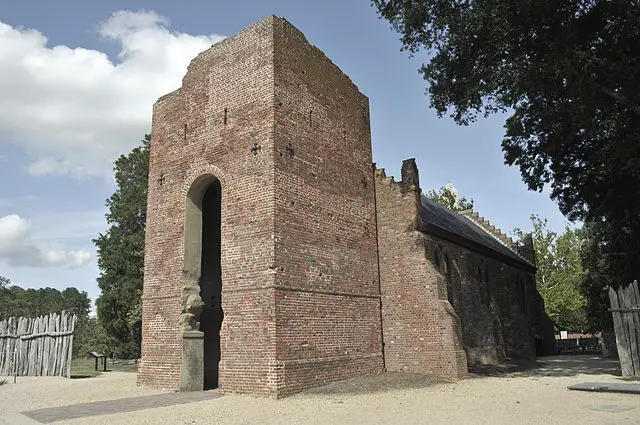
Jamestown was the first English settlement in North America founded on May 14, 1607. The settlement provided England its first foothold in the European contest for the New World, which had been monopolized by the Spanish since the journeys of Christopher Columbus in the late 15th century.
The settlement was a private venture sponsored and arranged by the Virginia Company of London. James I, King of England and Ireland, contributed a charter to a pack of investors to found the company on April 10, 1606. During this period, “Virginia” was the English name for the whole East Coast of North America north of Florida. The charter granted the company to settle everywhere from modern North Carolina to New York. The company planned to award investors by finding gold and silver deposits and discovering a riverway to the Pacific Ocean for trade with Asia.
A contingent of about 105 settlers left England in late December 1606 in three vessels (the Discovery, the Godspeed, and the Susan Constant) under the authority of Christopher Newport. They arrived the Chesapeake Bay on April 26, 1607. Shortly after that, the captains of the vessels met to open a box holding the names of partners of the colony’s governing council: Bartholomew Gosnold, one of the behind-the-scenes initiators of the Virginia Company; Edward-Maria Wingfield, John Ratcliffe, George Kendall, John Martin, and Captain John Smith. Wingfield became the settlement’s first president.
After a period of exploring for a settlement place, the colonists moored the vessels off a peninsula (nowadays an island) in the James River on the evening of May 13. The place’s marshy surroundings and humidity would prove to be unhealthy. Still, the area had several apparent benefits:
- Vessels could pull up close to it in deep water for effortless loading and unloading.
- It was unoccupied.
- It was connected to the landmass only by a thin neck of land, making it easier to protect.
3. Santa Fe, New Mexico (1607)
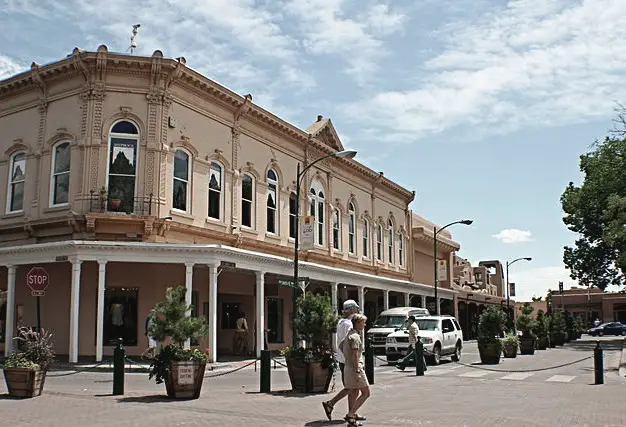
Santa Fe is the capital of New Mexico, located in the Rio Grande canyon at almost 7 thousand feet (~2 kilometers) above sea level, at the foot of the Sangre de Cristo Mountains.
Established in 1610 by Governor Don Pedro de Peralta, it was named Villa Real de la Santa Fé de San Francisco de Asis (Spanish: “Royal City of the Holy Faith of St. Francis of Assisi”).
During the 18th century, Santa Fe operated as the military, administrative, and missionary center of an extensive, exiguous populated Spanish colonial borderland province. U.S. interest in the region was provoked by the information of Lieutenant Zebulon Pike, who was incarcerated there during his scouting of the Southwest in 1806. After Mexican sovereignty (1821), brisk wagon-train trade grew over the Santa Fe Trail. During the Mexican War, the town was occupied by U.S. forces under officer Stephen W. Kearny in 1846, and an English-language newspaper was printed there in 1847. After New Mexico was surrendered to the U.S. in 1848, Santa Fe became the capital in 1851 of the Territory of New Mexico and the state in 1912.
4. Hampton, Virginia (1610)
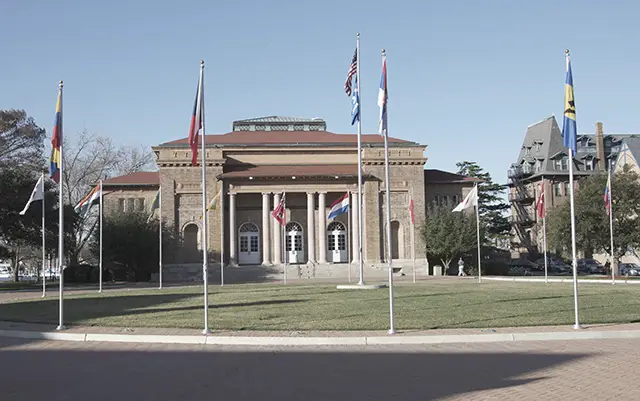
Hampton is lying on the Chesapeake Bay and the north coast of Hampton Roads, opposite Norfolk.
Hampton developed close to Fort Algernourne (currently Fort Monroe), built-in 1609 on the place of the settlement of Kecoughtan, named for the indigenous people that settled it to defend the area from Spanish invaders.
Permanent settlement is established in 1610, making it the country’s oldest constantly inhabited community of English origin. Hampton, named in the late 1600s for Henry Wriothesley, 3rd Earl of Southampton, was classified as a town in 1705. It developed as a seaport, being overshadowed later by Norfolk. Attacked by pirates in the beginning 1700s, and again during the American Revolution (1775-1783) and the War of 1812, Confederates torched it in 1861 at the start of the American Civil War to stop its capture by Union forces occupying nearby Old Point Comfort and Fort Monroe. It was reconstructed after the war and later thrived with the railroad’s arrival in the 1880s.
5. Kecoughtan, Virginia (1610)
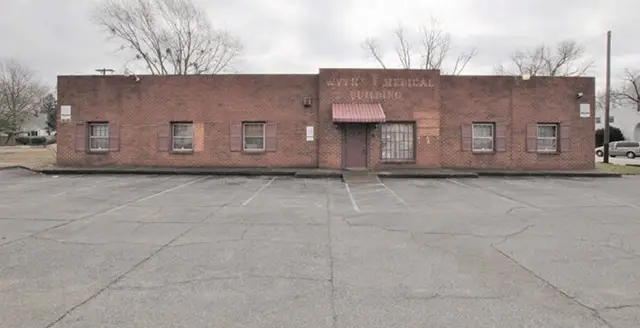
Kecoughtan was the name of the settlement now known as Hampton in the 17th century.
The settlement Kecoughtan was initially named Kikotan, the name of the Algonquian Indigenous Americans dwelling there when English colonists led by Admiral John Smith came in the Hampton Roads land in 1607.
The British colonists constructed Fort Algernon at Old Point Comfort beside their primary settlement in October 1609. After the arrival of an English merchant and politician, Lord De La Warr, the colonists captured the settlement of Native Americans on July 1610.
The Elizabeth City Parish, the oldest English-speaking parish in America, was established in the same year.
In the 1690s, Kecoughtan became part of the recently incorporated Town of Hampton, which later became an independent city.
Through Fort Algernon and the Kecoughtan settlement, Hampton can declare one of the oldest continuously inhabited English-speaking settlement in the U.S.
6. Newport News, Virginia (1613)
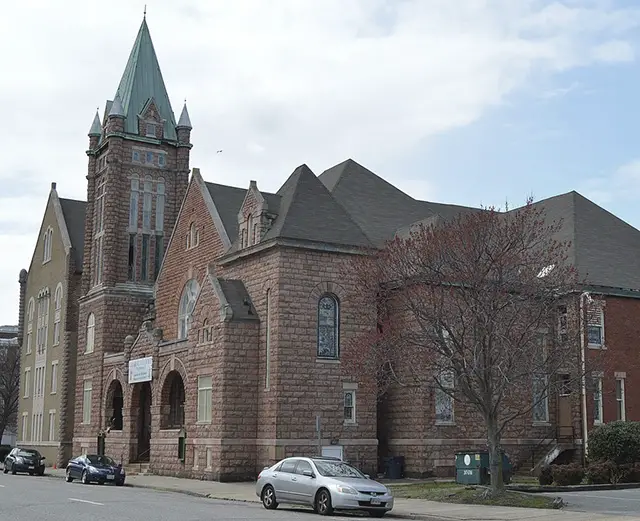
Newport News is the fifth most populated city in Virginia. It is situated at the Peninsula flank of Hampton Roads in the Tidewater region, including the low-lying plains of the southeast of Virginia, touching the Atlantic Ocean.
During the 17th century, soon after the establishment of Jamestown, Virginia, in 1607, English immigrants began colonizing the places along the James River for farms, including the current area of Newport News.
In 1619, Newport News’s place comprised one of four giant companies of the Virginia Company of London. It became known as Elizabeth Cittie and expanded west to Skiffe’s Creek.
In 1637 the area of Newport News became Warwick County. In 1958, by mutual consent by referendum, Newport News was combined with Warwick County and formed an independent city.
On the James Riverbank, the settlement’s original downtown area transformed swiftly from a ranch trading town to a modern city in the last quarter of the nineteenth century.
7. Albany, New York (1614)
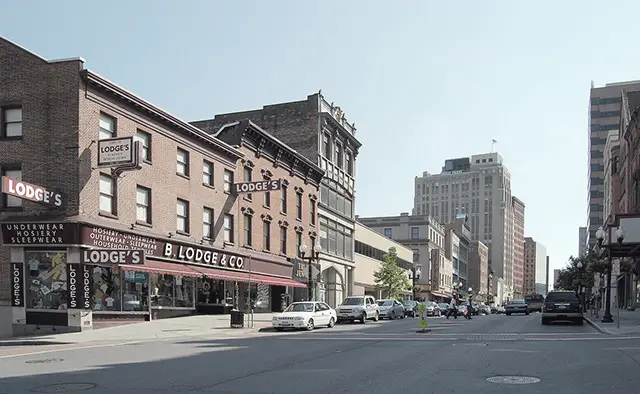
Albany is the capital of the state of New York, located 143 miles (230 kilometers) north of New York City.
In 1609 the English adventurer Henry Hudson landed the Half-Moon in the sandbars near the place while exploring for the Northwest Passage. Fort Nassau was constructed in 1614 on Castle Island and became a trading center for the New Netherland Company. A group of Walloon families made Fort Orange near the place in 1624 and started the first permanent colony, known as Beverwyck.
When Fort Orange was ceded to the British in 1664, the settlement was renamed to honor James, Duke of York and Albany. The settlement’s strategic place and the building of Fort Frederick created it a central colonial city.
Resettling frontiersperson began to arrive in Albany starting in 1783, and the town, a thriving fur-trading center, became a central outfitting point for wagon caravans heading west. The onset of the Erie Canal and the beginning of the railway improved traffic flow through the town, which became the crossroad of transportation to the upper Great Lakes.
8. Jersey City, New Jersey (1617)
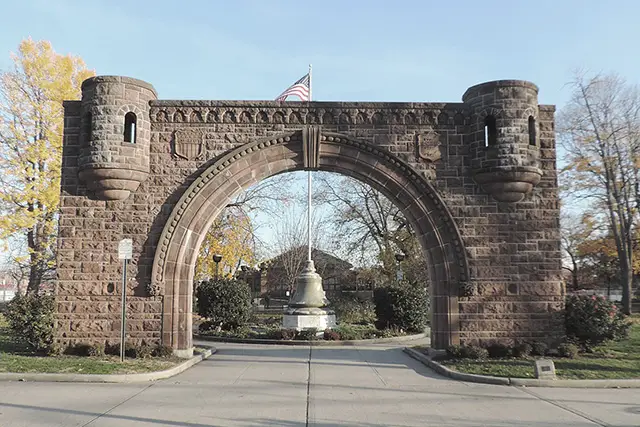
Jersey City is located between the Hackensack and Hudson rivers, contrary to Manhattan Island in New York City.
The Delaware Indians initially settled this place. Later (1618), the site was inhabited by Dutch trappers and became known as Paulus Hook (renamed Jersey City in 1820). A director of the Dutch West India Company, Michael Pauw, bought it from Delaware Indians around 1630, and by 1660 a permanent settlement had been founded. In 1664 the British captured it shortly, returned it to the Dutch, and regained it in 1674.
Jersey City’s appearance as the main transport center, sharing a communications complex with The Big Apple, began with its dockside structures and the fulfillment of railways and the old Morris Canal in the 1830s. In 1908 the Hudson and Manhattan underpasses linked the city to lower Manhattan Island.
9. Plymouth, Massachusetts (1620)
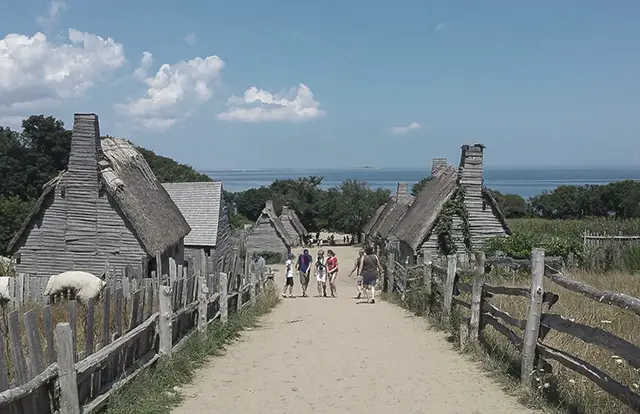
Plymouth is located on Plymouth Bay, 37 miles or 60 kilometers southeast of Boston. It was the place of the first permanent colony by European Pilgrims in New England.
The settlement holds a place of significant importance in American history and culture and is recognized as “America’s Hometown.”
The European colonists reached the coasts of Cape Cod in 1620. They constructed their first fortification and watchtower on Burial Hill. About 50% of colonists passed that first winter and were buried on Cole’s Hill.
Its coastal location creates Plymouth an excellent summer resort. A tourist-based economy is increased by light manufacturing, PC software development, fishing, and different services. Seafaring was the core of the earlier economy of the society, and busy docks and boatyards stayed.
10. Weymouth, Massachusetts (1622)
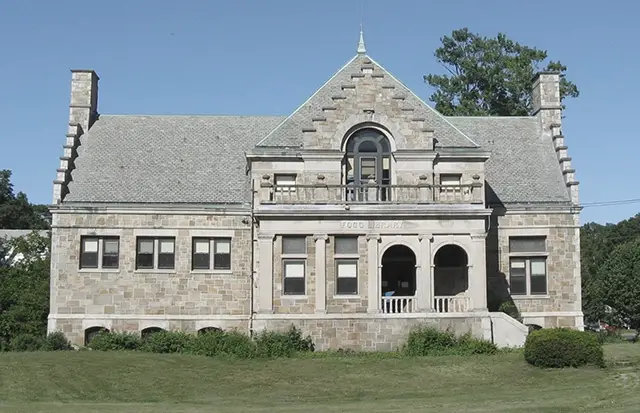
Weymouth is located on Hingham Bay, southeast of Boston. Settled in 1622 as the Wessaguscus Plantation by London merchant Thomas Weston, it was the dispersion point for the first journeys around Massachusetts Bay.
The name of the settlement was changed to Weymouth in 1635.
In those years, the city’s economy of the settlement relied on agriculture and fishing. Local wetland iron, found in 1771, formed the basis of the early iron industry. Shoe manufacturing was started in 1853. Primarily Weymouth is nowadays residential, with thousands of employees commuting every day to Boston or elsewhere.
The initial town hall was demolished by fire in 1914 and was rebuilt in 1928 with a town hall that reproduces the aged Massachusetts State House in Boston.
The Oldest City in Each U.S. State Mapped

Alabama
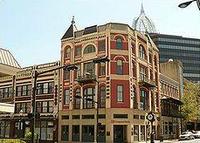
Founded by the French in 1702 as the first capital of Louisiana, Mobile is a port city on Alabama’s Gulf Coast and the oldest city in Alabama, and one of the oldest in the U.S.
During its first one hundred years, Mobile was a colony of France, then Great Britain, and finely, Spain. Mobile became a part of the U.S. in 1813.
Considered one of the Gulf Coast’s cultural centers, Mobile has art museums, a symphony orchestra, professional opera and ballet, and a considerable concentration of historic architecture.
Alaska

Kodiak is the principal city and one of seven neighborhoods on Kodiak Island. The first Europeans to explore Kodiak Island were the Russian explorers Vitus Bering and Aleksei Chirikov. Later in 1792 settlement, Kodiak was established by Alexandr Baranov. Alexandr Baranov was a Russian merchant who became chief of the Russian-American Company. Later the town of Kodiak became the capital of Russian Alaska. In the city, you can still see the Alexander Baranov House, the oldest building in Alaska.
After the Alaska Purchase by the U.S. in 1867, Kodiak became a commercial fishing base, which is the mainstay of its economy.
Arizona
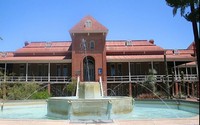
Tuscon was founded in 1775 as a military fort by the Spanish, though its official website states it has been constantly populated for over 12 thousand years.
Tucson performed as the capital of the Arizona Territory from 1867 to 1877. Tucson was Arizona’s largest city by the population during the early statehood until Phoenix exceeded it by 1920. Today Tucson is the second-largest city in Arizona.
Arkansas
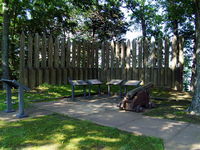
The Arkansas Post was the first European settlement in the Mississippi plain. French military officer Henri de Tonti founded it in 1686 as a French trading post on the lower Arkansas River.
Arkansas Post was mainly ruined in the Civil War and today operates as a state park.
Georgetown is the second oldest city in Arkansas, established in 1789, but it is still an operating city today.
California
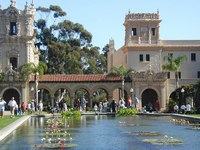
San Diego is a city in the American state of California on the shore of the Pacific Ocean and directly bordering the Mexican border.
Historically household to the Kumeyaay people. It was the first place dwelled by Europeans on the West Coast of the U.S. Upon anchoring in San Diego Bay in 1542, Juan Rodríguez Cabrillo declared the area for Spain, creating the foundation for the settlement of Alta California 200 years after. The Presidio and Mission San Diego de Alcalá, established in 1769, formed the first European colony in California.
Santa Cruz was also dedicated in California in 1769.
Colorado
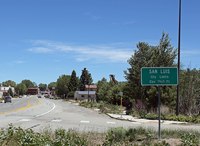
San Luis is the most populous city of Costilla County in Colorado, previously known as San Luis de la Culebra.
Hispanic immigrants from the Taos Valley (valley in New Mexico) founded several tiny settlements in the San Luis Valley and officially took control of this portion of the Sangre de Cristo Land Grant on April 9, 1851.
The settlement of San Luis stayed part of the Territory of New Mexico until 1861, when the state Colorado was founded.
According to the U.S. Census Bureau, the town has just a total area of 0.54 square miles (1.4 sq km) and a population of only 629.
Connecticut

Windsor lies on the northern boundary of Connecticut’s capital, Hartford. The population of the city is about 30 thousand.
Immigrants from Plymouth Colony constructed the first trading house in Windsor in 1633 on a stretch of land they purchased from Native Americans living there.
These territories were traditional sites of settlement by Mohegan Pequot tribes, who had lived here for thousands of years.
Delaware
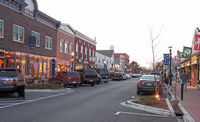
The Dutch first settled in Lewes in 1631. The colony had a brief existence, as a tribe of Lenape Native Americans wiped out the 32 settlers in 1632. Later the Dutch colonists established slowly to regroup.
As Lewes was the earliest colony in the state, and Delaware was the first state to approve the Constitution, the townlet refers to itself as “The First Town in the First State.”
Lewes is named after the town of Lewes in England, which is located in a county named Sussex (from which Sussex County, Delaware, bears its name).
Florida

St. Augustine is a northeastern city coast of Florida. Established in 1565 by Spanish adventurers, it is the oldest continuously settled European-established settlement in the contiguous U.S.
The city functioned as the capital of Spanish Florida for more than two hundred years.
Spain surrendered Florida to the U.S. in 1819, and St. Augustine has established as the capital of the Florida Territory after ratifying the Adams–Onís Treaty in 1821.
Nowadays, St. Augustine is part of the Jacksonville metropolitan area.
Georgia

Founded in 1733, Savannah is the oldest city in Georgia and is the county seat of Chatham County. Established in 1733 on the Savannah River, the city of Savannah became the British colonial capital of the Province of Georgia and later the first state capital of Georgia.
The city is a strategic port on the Savannah River during the American Civil War; nowadays, the city is Georgia’s 5th-largest city, industrial center, and a significant Atlantic seaport. It is Georgia’s fifth-largest city.
Hawaii
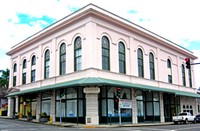
Hilo is the largest city in Hawaii County, which encloses the Island of Hawaiʻi.
Around 1100 AD, the first Hilo residents anchored, bringing Polynesian knowledge and practices.
Christian preachers anchored in 1822, and Hilo became a center of trade and whaling.
Idaho

The city of Franklin was established by Mormon settlers guided by Thomas Smart in 1860.
The town was named for Franklin Richards, an Apostle for The Church of Jesus Christ of Latter-day Saints. Franklin is the first permanent European settlement in present-day Idaho.
Today only 641 people live in the city.
Illinois
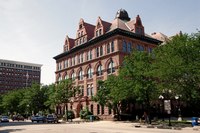
Peoria is the largest city on the Illinois River, founded in 1691 by Henri de Tonti’s French explorer.
Initially known as Fort Clark, it obtained its present name when the County of Peoria was established in 1825. The town was named after the Peoria tribe, an associate of the Illinois Confederation.
As an important port on the Illinois River, Peoria is a trading hub for a vast agricultural region that grows soybeans, corn, and livestock. Although the economy is sufficiently diversified, the city’s traditional manufacturing industries stay substantial and make different metal products, building materials and equipment, chemicals, and farm equipment.
Indiana
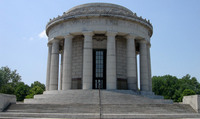
Vincennes is a city located in the Knox County of Indiana on the lower Wabash River, established in 1732 by French fur merchants and solder, notably François-Marie Bissot, for whom the colony was named.
Vincennes is the oldest continuously populated European settlement in the state and the oldest colony west of the Appalachians.
The surroundings of Vincennes were settled for thousands of years by various cultures of Indian peoples.
Iowa
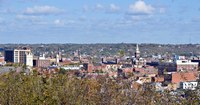
Dubuque is the principal industrial, educational, business, and cultural center for the region located along the Mississippi River.
The first permanent European immigrant in Dubuque was Julien Dubuque, who arrived here in 1785. In 1788, he obtained approval from the Spanish administration and the local Meskwaki American Indians to excavate the area’s rich lead deposits.
Kansas

Leavenworth is part of the Kansas City metropolitan area. Fort Leavenworth was founded in 1827 and is still in service nowadays, making it the U.S.’s third-oldest continually functioning military base. The city became known in American history for its role as a critical supply base in the settlement of the American West.
It was the biggest city on the Missouri River during the Civil War. Many recruits entered the Union Army from Leavenworth during the American Civil War.
Kentucky
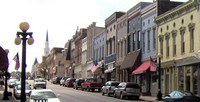
Harrodsburg is located in central Kentucky, near the Salt River. It was established in 1774 by James Harrod and his frontiersperson group. Harrodsburg was the first permanent English colony west of the Allegheny mountains.
Today, tourism and manufacturing (tobacco, horses, and dairy products) are the main drivers of the city’s economy.
Louisiana
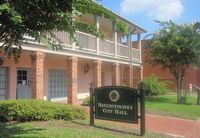
Natchitoches is a small city in Natchitoches Parish of Louisiana founded in 1714 by french solder Louis Juchereau de St. Denis as part of French Louisiana (New France). The town was named after the native Natchitoches people.
Moreover, Natchitoches is the home of the oldest general store in Louisiana established in 1863, the still working Kaffie-Frederick, Inc., General Mercantile, located on Front Street.
The city has preserved much of its historic European-style architecture documented as the Natchitoches Historic District on the National Register of Historic Places.
Maine

Kittery is a city in York County of Maine. It is the southernmost townlet in Maine. English settlement near the natural harbor of the Piscataqua River estuary started approximately 1623. Today Kittery is part of the Portland-South Portland–Biddeford, Maine metropolitan area.
Kittery has some nicely early architecture, including The John Bray House, built-in 1662 – the oldest surviving house in Maine.
The townlet is a popular tourist destination known for its many outlet shops.
Maryland
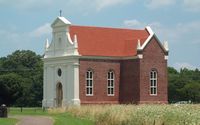
St. Mary‘s City was established in 1634 by English Catholics escaping religious persecution. It is the fourth oldest permanent English settlement in the U.S.
The city is located in the southernmost tip of Maryland on the western coast of the Chesapeake Bay.
St. Mary’s City is also believed to be the birthplace of religious freedom in the U.S.
The city is an internationally acknowledged archaeological research location and training base for archaeologists.
Massachusetts

Plymouth is a place of great importance in American history and culture and is acknowledged as “America’s Hometown.” Plymouth was the colony’s location established in 1620 by the Mayflower Pilgrims, where New England was first founded. It is the oldest town in New England and one of the oldest in the U.S.
The Britain explorer John Smith named the settlement after the city in South West England.
Throughout the 19th century, Plymouth prospered as a center of rope making, shipping, and fishing. The city remains an operational port, but its primary industry is tourism nowadays.
Michigan
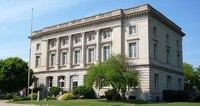
Sault Ste. Marie is the second-most populated municipality in the Upper Peninsula after Marquette.
In 1668, French preachers Claude Dablon and Jacques Marquette established a Jesuit mission in this place. Sault Ste. Marie grew as the 4th-oldest European city in the U.S. west of the Appalachians.
In the 18th century, the settlement became a significant post of the fur commerce, when it was a center for the British-owned North West Company, based in Montreal.
Today tourism is the most significant industry in the city.
Minnesota

Wabasha is located in the southeastern part of Minnesota on the Mississippi River. It is the oldest continually settled town in the upper Mississippi River valley. Wabasha is called after chief Wa-pa-shaw of the Sioux Native American tribe.
Some think Stillwater in Minnesota is the state’s oldest city because it was founded in 1854, while Wabasha wasn’t incorporated until 1858. But according to the year of first settlement, the Second Treaty of Prairie du Chien drafted in 1830 proves that Wabasha preceded it.
Mississippi
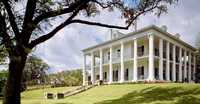
Natchez is located close to the state’s center, 90 miles (140 km) southwest of Jackson.
Natchez was established in 1716 by French colonists. It was the state’s most active slave-trading town.
Before the Civil War, the city was a center of cotton farmers and the Mississippi River trade.
The city was named for the Natchez tribe of indigenous Americans, who, with their predecessors, settled much of the area from the 8th century AD through the French colonial era.
Missouri

Ste. Genevieve was founded in 1735 by French Canadian colonists and settlers from east of the Mississippi River.
Before the arrival of French Canadian colonists, Native Americans of the Mississippian culture had lived in the area for more than one thousand years. They created complex earthworks at such places as Cahokia. They had an expansive cross-continental trading net along the Mississippi-Ohio river waterways, from the south to the Great Lakes.
Montana

Stevensville was officially established in 1841, forty-eight years before Montana became the American 41st state, when Father Pierre Jean De Smet moved in with three carts, constructing St. Mary’s Mission – the Northwest’s first church and school.
The settlement’s name was altered from St. Mary’s to Stevensville in 1864 to honor Isaac Stevens, an American military officer and politician who served as territorial governor of Washington from 1853 to 1857.
Nebraska
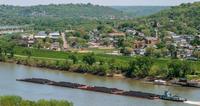
Bellevue is a suburban municipality in Sarpy County. The city was initially established as a trading post for the Missouri Fur Company by Joshua Pilcher in 1855. Still, there were financial problems, and, eventually, Lucien Fontanelle became the owner of the post and the first permanent resident of Bellevue.
The name of the city Bellevue translates from French as “beautiful view.”
Nevada
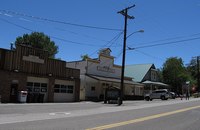
Genoa is located within Carson River Valley and is about 42 miles (68 kilometers) south of Reno. Mormon pioneers first populated the settlement. The town developed as a trading post called Mormon Station, which operated as a respite for visitors on the Carson Route of the California Trail. In June 1850, H.S. Beatie and fellow Mormons constructed a roofless log enclosure and corral as a trading camp near a small creek. Next year John Reese came in the area with horses, cattle, and a dozen wagons packed with supplies to set a permanent trading post. By 1852, immigrant traffic thru the region was considerable, and the settlement grew. Firstly, Genoa functioned as the first capital of the Nevada Territory until the state’s capital was transferred to Carson City.
New Hampshire

Dover is the largest city in the New Hampshire Seashore region and the fifth-largest city.
The first known European to explore the region was Martin Pring from Bristol, England, in 1603. In 1623, two brothers, William and Edward, settled close to the conjunction of the Bellamy and Piscataqua rivers. They were fishmongers shipped from London by the Company of Laconia to found a settlement and fishery on the Piscataqua.
The city was called “Dover” in 1637 by the governor, Reverend George Burdett. It was perhaps named after Robert Dover, an English lawyer who opposed Puritanism.
New Jersey

Newark was settled in 1666 by Puritans led by Robert Treat from a small English colony New Haven Colony at the mouth of the Passaic River.
The municipality’s name is thought to emanate from Newark-on-Trent in England.
Newark is split into five political neighborhoods (North, South, East, West, and Central). Newark’s Branch Brook Park is the oldest county park in the U.S. and is home to the country’s most extensive collection of cherry bloom trees, numbering over 5,000.
The city has one of the busiest seaports and airports in the U.S.
New Mexico
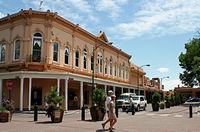
Santa Fe is the capital city of the US state of New Mexico. The city’s name “Santa Fe” means ‘Holy Faith’ in Spanish. The town was founded in 1610 as the capital of Nuevo México (“New Mexico”), which makes it the oldest state capital in the US. It is also at the highest elevation of any US state capital, with an altitude of 7,199 feet (2,193 meters).
The territory around Santa Fe was inhabited for thousands of years by indigenous people.
Santa Fe is widely regarded as one of the world’s great art cities due to its numerous art museums and installations.
New York

Albany is the capital of the New York state, located on the west bank of the Hudson River.
Algonquian-speaking Mohicans initially settled in the Hudson River area. Lately, the place was inhabited by Dutch colonists who, in 1614, constructed Fort Nassau for fur trading. In 1664, the English took over the Dutch colonies, renaming the city Albany in the glory of the Duke of Albany, the forthcoming James II of England, and Ireland.
Albany was a transportation and trade hub in the late 18th century and throughout the 19th century.
North Carolina

Bath is a town in Beaufort County on the Pamlico River established on March 8, 1705. The city of Bath was also North Carolina’s first port. The first immigrants were French Huguenots, Protestants who moved to Virginia as refugees. Bath was the first capital of North Carolina from 1705 until 1722.
Bath has altered little since the colonial period. People interested in inheritance tourism have made it a preferred destination for both residents of eastern North Carolina and tourists from other states.
North Dakota
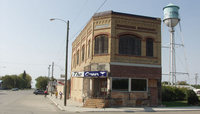
Pembina is located 2 miles (3.2 km) south of the US-Canada boundary in the far northeast corner of the North Dakota, at the convergence of the Red and the Pembina Rivers.
Diverse indigenous tribes (Assiniboine, Chippewa, Lakota) long populated the area of Pembina. The British Hudson’s Bay Company founded a fur-trading post in the area of Pembina in 1797. The city was also linked to trade for plains bison.
Ohio

Marietta is located in southeastern Ohio in the conjunction of the Muskingum and Ohio Rivers.
Established in 1788 by frontiersperson, Marietta was the first permanent U.S. settlement in the newly-founded Northwest Territory. It is named for Queen of France Marie Antoinette. Before European colonization, the area was settled by indigenous tribes of the Hopewell tradition.
After the American Revolutionary War, the U.S. traded and gifted large parcels of land to facilitate development in this place.
Oklahoma
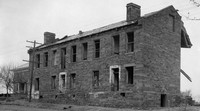
Fort Gibson is a city in Muskogee and Cherokee counties of Oklahoma.
Colonel Matthew Arbuckle of the U.S. Army founded Fort Gibson in 1824.
The citizens believed Fort Gibson was poorly located after mourning fires, mosquitoes, and other disasters. They moved the settlement to higher ground about 1900.
Oregon

Astoria is a deepwater port city in Clatsop County established in 1811 and the first U.S. settlement west of the Rocky Mountains.
The city is named for John Jacob Astor, an entrepreneur from New York City, whose American Fur Company established Fort Astoria and monopoly in the fur business in the earlier 19th century.
The current area of Astoria belonged to an extensive, prehistoric Indigenous trade system of the Columbia Plateau.
Pennsylvania

Philadelphia is the largest city in Pennsylvania and the 6th-most-populous city in the U.S. It is also the second-most populous city in the Northeastern United States, behind New York City.
The city was founded in 1682 by an English Quaker, William Penn.
Philadelphia recreated an instrumental part in the American Revolution as a gathering place for the Founding Fathers of the U.S., who signed the Declaration of Independence in 1776.
In the 19th and 20th centuries, Philadelphia became an important industrial and railroad hub. The city expanded due to an inflow of European immigrants, most of whom originally came from Germany and Ireland.
Rhode Island
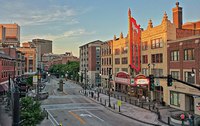
Providence was founded in 1636 by Roger Williams, a Reformed Baptist religious exile from the Massachusetts Bay Colony. He named the place in praise of “God’s merciful Providence,” which he thought was responsible for exposing such a harbor for him and his adherents. The town is located at the mouth of the Providence River, flowing into Narragansett Bay.
Providence was one of the first cities to industrialize and became noted for its fabric manufacturing and following machine instruments.
South Carolina
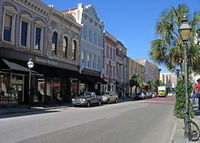
Charleston is the largest city in South Carolina, located on Charleston Harbor.
The city was established in 1670 as Charles Town, honoring King Charles II of England.
Charleston’s importance in U.S. history is linked to its role as a major slave-trading port. Almost one-half of enslaved people brought to the U.S. came to Charleston.
Known for its vital tourism industry, in 2016, travel magazine “Travel + Leisure” rated Charleston as the best city globally.
South Dakota
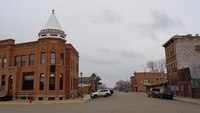
The settlement of Fort Pierre formed about an 1832 fort and trading camp placed on the west bank of the Missouri River, near the junction with its tributary Bad River. An earlier American-owned trading camp had been functioning nearby since 1817.
On March 30, 1743, French Canadian fur merchant and explorer Louis-Joseph Gaultier de La Vérendrye reached the area of present-day Fort Pierre during a journey west from Quebec. In the 1803 Louisiana Purchase, the U.S. obtained this area and the rest of France’s vast territory west of the Mississippi River.
Tennessee
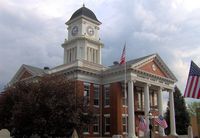
Jonesborough was established in 1779, seventeen years before Tennessee became a state and while the territory was under the jurisdiction of North Carolina. It was called after North Carolina lawmaker Willie Jones, who had supported the state’s westward extension across the Appalachian Mounts.
Jonesborough has initially been a part of the Washington District. In 1784, it became the capital of the autonomous State of Franklin. Congress, nevertheless, never acknowledged Franklin, which North Carolina reclaimed in late 1788.
Texas
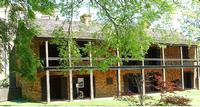
Nacogdoches is a small municipality of Nacogdoches County in East Texas. Nacogdoches is a sister town of the more minor, similarly named Natchitoches in Louisiana.
The first evidence of settlement in the same area dates back to 10 thousand years ago.
Nacogdoches stayed a Caddo Indian settlement until the earlier 19th century. In 1716, Spain founded a mission there. The “city” of Nacogdoches formed in the 1760s after the French vacated the region and Spanish administrators chose that keeping the mission was too expensive.
Utah
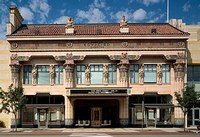
Ogden is located about 40 miles (64 km) north of Salt Lake City and 10 miles (16 kilometers) east of the Great Salt Lake.
The city was founded by the trapper Miles Goodyear in 1846. It was initially called Fort Buenaventura. Later Mormon settlers purchased the fort in 1847 for $3,000 (equivalent to $83000 in 2020). It was officially incorporated in 1851.
The town functioned as a central railroad hub throughout its history and still manages a great deal of cargo rail traffic, making it a convenient place for manufacturing and business.
Vermont

Westminster initially was called New Taunton and was settled in 1735 and under the jurisdiction of the Massachusetts Bay Colony. But the city didn’t have any permanent settlers in the region until 1751, when a survey placed “No. 1” in the New Hampshire Grants with the name of Westminster. In 1762, when the King legislated that the Connecticut River would be the boundary between states New Hampshire and New York, Westminster town became a part of Cumberland County, New York.
Virginia
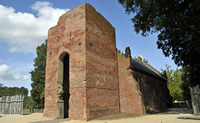
The Virginia Company of London found Jamestown as “James Fort” on May 4, 1607, on the northeast bank of the James River, about 2.5 miles (4 kilometers) southwest of the center of modern Williamsburg.
Jamestown operated as the colonial capital from 1616 until 1699.
In August 1619, the first recorded enslaved people from Africa to British North America came in the Jamestown colony. They most likely labored in the tobacco fields.
In 1676, Jamestown was intentionally torched during Bacon’s Rebellion, though it was quickly reconstructed.
Washington

European-American settlement at Steilacoom began with Lafayette Balch, a sea skipper from Maine, and the city officially became a town in 1854. The origin of the word “Steilacoom” is undefined, but according to the Legacy Washington program, the settlement’s name is emanated from a Native American word signifying “little pink flower.” Another possibility is that it was named by fur traders and is an adaptation of Tail-a-Koom, the name of a Native American chief.
Steilacoom’s primary source of earlier prosperity was the processing and exporting of lumber to San Francisco.
West Virginia
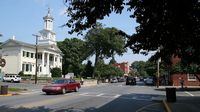
Shepherdstown, founded in 1762, is situated in the Shenandoah Valley along the Potomac River in Jefferson County.
The first British colonial immigrants began their migration into the northern end of the Shenandoah Valley in the 18th century. Many traversed the Potomac River at Pack Horse Ford – approximately one mile (two kilometers) downriver from the future place of Shepherdstown.
The Colony of Virginia started giving Valley land grants in the 1730s. In 1734, Thomas Shepherd was given 222 acres (898 thousand sq m) on the south side of the Potomac River, along the Town Run. He selected 50 acres (202 thousand sq m) from that tract and laid out a town.
Wisconsin

The city of Green Bay is located at the head of Green Bay, at the mouth of the Fox River.
Samuel de Champlain, the founder of New France, designated Jean Nicolet to initiate a peaceful partnership with Native Americans in the western territories, whose unrest interrupted the French fur commerce and to find a shorter trade road China through Canada.
Nicolet established a little fo trading fur post here in 1634, originally named “La Baye or La Baie des Puants” (French for “The Bay of Stinking Waters”).
Wyoming
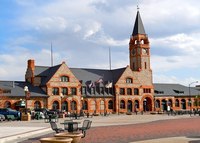
Cheyenne is named for the Cheyenne indigenous people in 1867 when it was established in the Dakota Territory.
At a celebration on July 4, 1867, Union Army officer Grenville M. Dodge of the Union Pacific Railroad declared the choice of a townsite for its mountain area headquarters adjoining to the bridge the railroad planned to construct across Crow Creek. At the same celebration, Major General Christopher C. Augur informed the choice of a site three miles (5 kilometers) west of Crow Creek Crossing for an American Army fort to defend the railroad.
On July 25, 1868, the U.S. arranged the Territory of Wyoming, and Governor John Allen Campbel designated Cheyenne the temporary territorial capital.
Located near the southeast corner of the state, Cheyenne is one of the country’s least centrally placed state capitals.

You forgot to say anything about Cahokia, a city by any definition—from 1000 years ago, well before the start of European contact/genocide.
Est.1683-Presidio Texas on the Rio Grande borders Ojinaga Mexico, as Cabeza de Vaca came through these parts in 1535. This land has been occupied for over 2,000 years if not longer.
The oldest USA city is San Juan PR established in 1493
Chester, PA is the oldest city in Pennsylvania NOT Philadelphia. Penn landed there first.
Newport Rhode Island was incorporated in 1639.